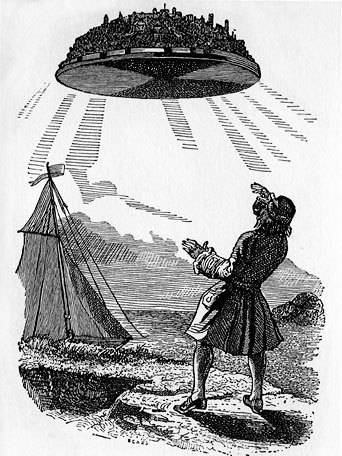 |
| Laputa's observatory contained the lodestone, which enabled it to float. |
For now, I've got this one: why does Arthur follow Farthington? More precisely, why would a guy who sees visions of Mary and the Garden of Eden and/or the new creation (The Sweet World) have anything to gain from following Farthington?
At this point in the story's development, it is that Farthington has found concrete evidence of things Arthur has experienced in mystical visions. Because he is the only guy walking around with proof of a reality nobody else believes Arthur experiences, Arthur assumes Knology must mean something, too. Unfortunately, Farthington has just stumbled onto the lodestone, the tunnels, the secrets of Iceland, etc.
What we get then, is a variation on the theme of something simultaneously being true (the lodestone) and untrue (Knology). Arthur has visions of Farthington playing a heroic role in the perils of turbulent reversals, but hasn't seen a complete enough picture of Farthington to distrust him.
I feel like I've made Arthur's attraction to Farthington too simple for your tastes, but I'm wondering if I'm on to something. I need a reason why someone who sees the splendor of heaven would cast that splendor aside for Farthington. It seems more likely that he would have to attach to Farthington to serve his quest to reach The Sweet World than to reject that quest in favor of something as empty as Knology.
No comments:
Post a Comment